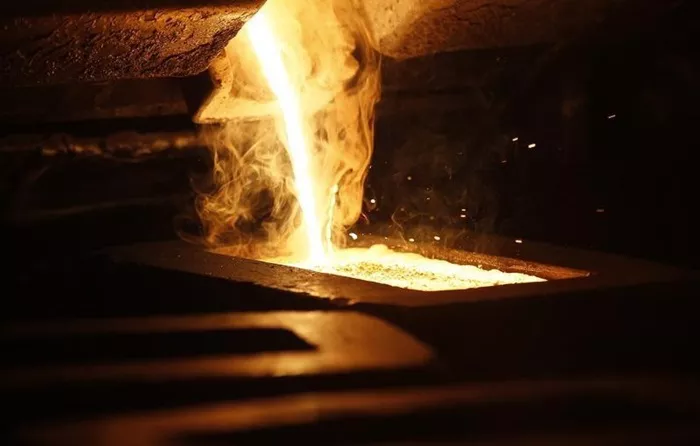Gold prices surged to a new all-time high on Thursday, reaching $2,954.84 per ounce, driven by heightened demand for the precious metal amid escalating fears of a global trade war sparked by US President Donald Trump’s latest threats. As of 11:00 a.m. ET, the price moderated slightly, trading at $2,936.95, while US gold futures also gained, rising 0.6% to $2,955.50 in New York.
The rally in gold prices comes as Trump announced the potential for new tariffs on critical goods such as lumber, cars, semiconductors, and pharmaceuticals. This move follows his earlier decisions to impose a 10% tariff on Chinese imports and a 25% tariff on steel and aluminum, further escalating tensions in the global trade landscape.
Experts suggest that these trade tensions are continuing to stoke inflation and growth concerns, fueling increased demand for gold as a safe-haven asset. “Ongoing trade tensions continue to stoke inflation and growth concerns, and therefore safe-haven interest in gold,” said Peter Grant, vice president and senior metals strategist at Zaner Metals.
Strong Outlook for Gold
The surge in gold prices is also influenced by speculation that the US government could revalue its bullion holdings from their 1973 price to current market levels. Although US Treasury Secretary Scott Bessent dismissed the idea, the mere discussion contributed to the rally. “We’re seeing a bit of profit-taking, perhaps driven by Bessent’s comments. But mostly the market was looking for an excuse to book some profit following the latest run-up in prices,” said Ole Hansen, head of commodities strategy at Saxo Bank. However, Hansen emphasized that the underlying support for gold remains strong, potentially limiting any significant losses.
Gold has risen by 12% so far this year, following a remarkable 27% surge in 2024, as concerns over Trump’s trade policies and geopolitical strategies continue to shape the market. Goldman Sachs raised its year-end target for gold to $3,100 per ounce, citing stronger-than-expected central bank buying as a key driver for the precious metal’s price.
Geopolitical and Economic Factors Boosting Gold Demand
Further supporting gold’s rise are growing geopolitical tensions, particularly surrounding the ongoing conflict in Ukraine. Fears that Trump could abandon American support for Ukraine, following Russia’s invasion, have also heightened demand for gold as a hedge against instability. While a potential peace deal may briefly alleviate geopolitical concerns, it could temporarily weigh on gold prices in the short term. However, Peter Grant from Zaner Metals noted that the current all-time high could persist for weeks due to the strong fundamental factors supporting gold.
The minutes from the Federal Reserve’s most recent policy meeting also revealed that concerns over rising inflation, partly triggered by Trump’s trade policies, have reinforced the central bank’s decision to hold off on further rate cuts, which adds to gold’s appeal.
Additionally, data showed that Swiss gold exports to the US reached their highest levels in at least 13 years in January, further indicating the increased global demand for gold as an investment safe haven during times of uncertainty.
In conclusion, gold’s price surge reflects a combination of geopolitical risks, trade tensions, and economic uncertainties that are likely to sustain demand for the precious metal in the coming months. As investors seek protection from these volatile factors, gold’s strong performance may continue, supported by both institutional and individual buyers looking to safeguard their assets.
Related topics:


